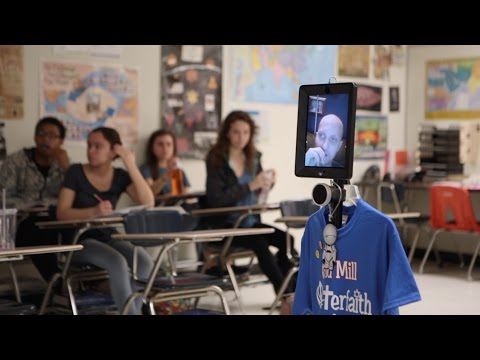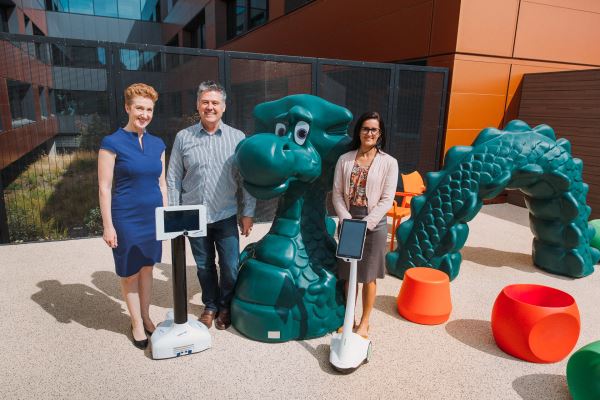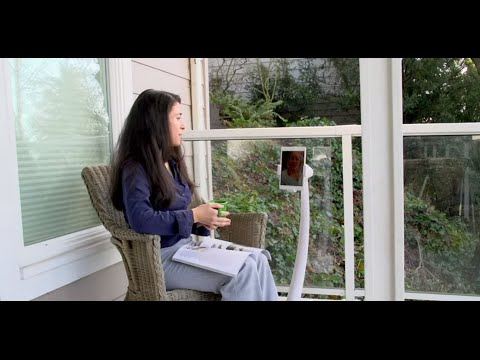An estimated 60,000 kids in Australia miss school each year because of serious illness or injury.
They remain at home or in hospital, watching from the sidelines – and have little interaction with teachers or classmates. Some will miss a few weeks, others will miss months, and even years.
This is the finding of a national-first report into the profound challenges facing Australian kids who are unable to attend school through chronic illness or injury.
The report by the Australian Research Alliance for Children and Youth and not-for-profit organisation MissingSchool recommends sweeping changes to minimise the impact on all those affected.
This includes a system of identifying the children concerned, supporting families with resources and maintaining dedicated two-way teacher contact and instruction and peer contact during the absence.
One of the key recommendations is to use technology that can provide real-time virtual participation in the classroom to keep sick kids connected.
To help achieve these goals MissingSchool has secured up to $600,000 in funding over three years to trial telepresence robots in classrooms.
Attending lessons remotely
The organisation is trying to help seriously sick Australian kids live a relatively normal life – starting the robots in the ACT.
With the new technology, students can control the movement of the robot in real time via a laptop, or other device which means they can attend lessons remotely. They can also be seen and heard through a two-way video screen, allowing them to interact with students and staff.
Megan Gilmour, chair of MissingSchool, said the robots could enable a bed-bound student to receive the same quality of teaching as they would if they were in their classroom.
“Medical science is saving and prolonging the lives of sick kids and we must act now to give them real-time inclusion in their classes and connection with their friends and teachers, to have hope and build positive futures,” she said.
The initial trial started in ACT, where MissingSchool was founded six years ago. The pilot is being rolled out to other states from Term 1 of this year.
Australia leading the way
ACT Education Minister Yvette Berry was the first to agree to the trial, making the ACT the first jurisdiction in the national pilot, and one of only a handful in the world to trial this solution.
And with the funding received from the St George Foundation, up to 75 robots will be placed in participating schools across Australia over three years.
Ms Gilmour co-founded the MissingSchool program in 2012 with two other Canberra mothers who had children with life-threatening illnesses.
Her son Darcy, who is now nearly 18, had a bone marrow transplant when he was just 10 years old which kept him away from his primary school in the ACT for almost two years.
Emotional scars
When Darcy finally recovered after missing nearly two vital years of school, Ms Gilmour made it her mission to find a solution to help other mothers and students in the same boat.
“Absence from school creates many emotional scars,” she says.
“Research has found that as well as suffering from a serious illness, a child also experiences social isolation and disconnection which can create a long list of negative side effects and consequences that could be life-long.
“This is why it is important to maintain a relationship with the school and a connection with teachers and classmates.
“A social and emotional connection with the school community is critical.”
Entire family is affected
Long absence from school not only affects the sick child, but also impacts on parents and siblings.
“The whole family is affected,” says Ms Gilmour.
“It’s hard on parents – and siblings especially can experience disconnection from school.
“It’s very traumatic for all involved.”
Some students live with chronic illnesses throughout their entire school life.
Conditions such as cancer, Cystic Fibrosis, diabetes, asthma, Crohn’s disease, extreme allergies or major surgery can keep children away from school for months or years.
Darcy, who has now made a full recovery, spent two years in a hospital and received some tuition through hospital school in Sydney during his illness – he was isolated from classmates and regular teachers in the ACT.
At that time, that was the only available option, says his mother.
Emotional connection
"We know academically that kids fall behind in these circumstances, but they might get hospital school teaching and some other forms of academic support.
"However, the importance of it is really around social and emotional connection, and that can't be made up by anything but your own community. That's the importance of it for us."
Ms Gilmour, an entrepreneur and social innovator, was awarded a Churchill Fellowship to research the best international models to enable seriously sick kids to maintain connection with their education.
Countries selected for the six-week investigation included Belgium, Canada, Finland, Netherlands, Sweden and United Kingdom.
“It is a global problem and it is going to become a serious economic problem if left unchecked because in some developed countries chronic illness in the student population is around 15-16%,” says Ms Gilmour.
Medical science is saving and prolonging the lives of these kids and our education systems need to keep pace.
Improving productivity
“We will have a whole segment of society – survivors of serious illnesses in childhood – who may be compromised in their productive capacity into their adulthood.
“Helping to educate these kids will help improve their future prospects in all ways.
“The approach MissingSchool is pursuing demonstrates the way complex social challenges can be tackled by combining the strengths of government, private sector, and not for profits.”
Telepresence allows kids who are away from school to be seen and heard in their classrooms, and learn from their teachers with their classmates. The pilot is intended to be a catalyst for long-term solutions for sick kids that integrates connection between hospital, home and school.
It can support all students to learn about inclusion through applied STEM.
Initially, as part of the pilot program, there will be two telepresence robots at schools in the ACT.
How it works
A telepresence robot is a computer, tablet, or smartphone-controlled robot which includes a video-camera, screen, speakers and microphones. People can interact with the robot and can view and hear its operator. The operator can simultaneously view what the robot is “looking” at and "hearing."
For the pilot scheme, MissingSchool is currently using two telepresence robots – a Padbot supplied by Exaptec and the Aubot supplied by Australian company Aubot Robotics.
A US-designed and manufactured Omni-wheel robot that can rotate in different directions is also being considered.
“The students not only think this technology is cool, but it also helps them in developing STEM skills,” says Ms Gilmour.
The new program is not intended to replace hospital schools, but to work with them and improve the reach and services now offered.
If successful, the pilot study could revolutionise teaching for “isolated” members of the community, including people in remote areas and in aged care environments.
“There is so much potential for this,” says Ms Gilmour.
“This train is moving fast and we won’t see it stop now.”
To find out more visit: www.missingschool.org.au
Helping sick kids through technology … (from left): Megan Gilmour, Hugh Dixon and Sarah Jones


